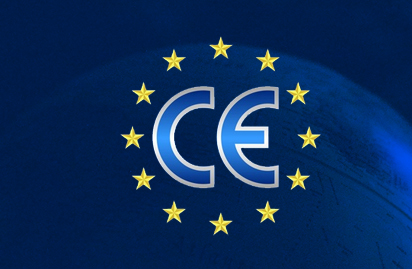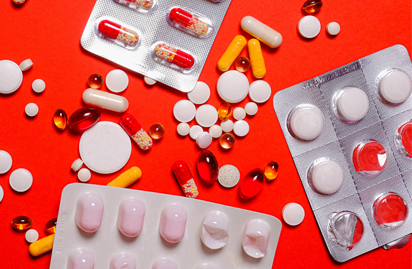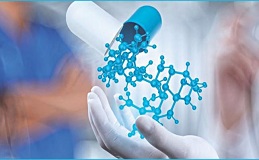The Food and Drug Administration (FDA) is responsible for the protection of public health and safety by ensuring the safety, efficacy, and security of human and veterinary drugs, biological products, and medical devices within the United States of America (US). They ensure the general health and adequate safety of foods and drugs consumed by the people by ensuring the safety of the country’s food supply, cosmetics, and products which tend to emit radiation.
The FDA also has the responsibility of regulating the manufacturing, marketing and distribution of tobacco products to protect the public health and to reduce tobacco use in minors.
The FDA is responsible for advancing the public health by speeding-up innovations which make medical products more effective, safer and more affordable. It does so by helping the public get the accurate, science-based information they need, to use medical products and foods to maintain and improve their health.
The FDA also plays a significant role in the nation's counterterrorism capabilities. FDA fulfils this responsibility by ensuring the security of the food supply and by fostering the development of medical products to respond to deliberate and naturally emerging public health threats.
Agencies Which Give this Certification in India
The regulating body for obtaining an FDA stamp in India is the India Office which has been the lead on-site present in India since November 2008. The main goal of this New Delhi-based office is to ensure the safety, quality and effectiveness of the medical products and the food produced in India for export into the United States, without any hindrance over the same.
The India Office seeks to accomplish its objectives inthe following ways:-
- Conductingcommodity specific inspections which are needed to meet the requirements of the FDA-specific legislative regulations, so prescribed. It does this by sampling the drug or the food randomly and testing such samples prior to them seeking FDA Approval.
- By building stronger coalitions and partnerships with regulatory authorities, the industry, academia, multilateral organizations, non-governmental organizations and other relevant institutions in order to increase the FDA’s understanding of India’s regulatory framework and processes. This is also done for sharing information about FDA’s science based requirements.
- By enhancing the FDA’s knowledge of India’s legal requirements and overseeing the capacity of India's regulatory agencies. The Indian companies which manufacture or export products subject to the FDA’s jurisdiction are determined here. The emerging trends and issues of relevance to the FDA to ensure product safety and quality is also kept in mind for better determination.
- Through expansion of its research arena and building of higher quality data acquisition processes for informing the FDA’s regulatory decisions and actions.
Products Regulated by the FDA
The FDA regulates a large number of products, including foods (except for certain aspects of some meat, poultry and egg products, which are regulated by the U.S. Department of Agriculture); human and veterinary drugs; vaccines and other biological products; medical devices intended for human use; radiation-emitting electronic products; cosmetics; dietary supplements; and tobacco products.
The scope of FDA’s regulatory authority is very broad. FDA's responsibilities are closely related to those of several other government agencies and it is often frustrating and confusing for consumers to determine the appropriate regulatory agency to contact. The following is a list of traditionally-recognized product categories that fall under the FDA’s regulatory jurisdiction, withthe items regulated by the FDA:
Foods:
- dietary supplements
- bottled water
- food additives
- infant formulas
- other food products (although the U.S. Department of Agriculture plays a lead role in regulating aspects of some meat, poultry, and egg products)
Drugs:
- prescription drugs (both brand-name and generic)
- non-prescription (over-the-counter) drugs
Biologics:
- vaccines for humans
- blood and blood products
- cellular and gene therapy products
- tissue and tissue products
- allergenics
Medical Devices:
- simple items, like tongue depressors and bedpans
- complex technologies, such as heart pacemakers
- dental devices
- surgical implants and prosthetics
Electronic Products that EmitRadiation:
- microwave ovens
- x-ray equipment
- laser products
- ultrasonic therapy equipment
- mercury vapor lamps
- sunlamps
Cosmetics:
- color additives found in makeup and other personal care products
- skin moisturizers and cleansers
- nail polish and perfume
Veterinary Products:
- livestock feeds
- pet foods
- veterinary drugs and devices
Tobacco Products:
- cigarettes
- cigarette tobacco
- roll-your-own tobacco
- smokeless tobacco
Process of Review and Grounds for Refusal
During the process of entry review, the imported products are not distributed within the U.S. commerce until the FDA has determined their admissibility.
FDA-regulated products are refused entry if they appear to be or are found to be:
- adulterated, meaning the product is contaminated, not safe, unapproved, or does not otherwise meet applicable standards,
- misbranded, meaning the labels contain false or misleading information, or the product is not registered and listed, if it is required,
- forbidden or restricted for sale.
Products which do not comply with the U.S. requirements may be refused admission. Refused products must be destroyed or exported from the United States within 90 days. The FDA's authority over certain imported products is granted by Congress through sections 536 and 801 of the Food, Drug and Cosmetic Act (FD&C Act).
Products which Require FDA Approval and Consequences of Violations:-
The process of acquiring an FDA approval depends entirely upon the type of product which you are intending to market and for which you seek approval within the US. It is important to note that the FDA does not mandatorily require an FDA approval for every kind of product and instead focuses on certain specific categories. These categories can be divided into the following:-
- FDA approvals for Food, Beverages and Dietary Supplements
The FDA does not make it mandatory to approve food, beverages or dietary supplements. Food facilities are not required to obtain any type of certification or approval prior to the distribution of its products within the US. However, food facilities are required to register with the FDA. Being registered with the FDA does not indicate any FDA approval of such a facility or its products.
Furthermore, this does not apply to any new food additives introduced thereafter. All new food additives are mandatorily required to acquire the FDA approval. In case a manufacturer wants to use any new food additive within his product, he must acquire the appropriate approval by putting the said additive through the required testing under the FDA.
- FDA approvals for Drug Products
Determining whether a new drug requires an FDA approval or not depends entirely on whether this new drug conforms to an over-the-counter (OTC) monograph. An OTC monograph mainly establishes conditions which the FDA has pre-determined to ascertain that a drug will be safe for consumption and also effective. Once the OTC monograph has been finalized, the drug establishments are authorized to market the drug which conforms to the monograph, without any FDA approval. The FDA also uses certain enforcement discretion processes to allow certain drugs to be marketed without approval in case they conform with the tentative final monographs.
In case a new drug does not comply with a monograph, it will require FDA approval. In order to get the FDA approval, drug manufacturers are required to conduct lab, animal and human clinical testing and submit the data from the same to the FDA.The FDA reviews this data and may approve the drug if the agency determines that its benefits far outweigh any risks for intended use.
The marketing of a new drug that does not conform to an OTC monograph and which has not been approved by the FDA will be considered as an unapproved new drug which has been prohibited under the FD&C Act.
Even though the FDA is known to approve new drugs a lot of the times, the agency never approves compounded drugs. Drug establishments must register with the FDA and must list the products. However, it is important to note that neither listing nor registration implies the securing of the FDA Approval for the establishment or its products.
- FDA’s approval for Medical Devices
The FDA places medical devices into three categories, namely, Class I, Class II and Class III. Under these, Class III devices are the highest-risk devices and the only ones which are mandatorily required to acquire the FDA premarket approval. The manufacturers of Class III devices are required to demonstrate to the FDA how the device provides reasonable assurance of safety.
Class I and II devices do not require FDA approval. Such devices, unless exempt under the FD&C Act are only required to submit a remarketed notification to the FDA instead. The purpose of the above is to demonstrate to the FDA that the device is substantially equivalent and safe to an already legally marketed device. In case the FDA determines that such a device is indeed substantially equivalent to a legally marketed device, it clears the product for further marketing instead of approving it. Device establishments are required to register with the FDA and also list their devices. However, again, neither listing nor registration amounts to an FDA approval of the establishment or its devices.
- FDA Approval of Cosmetics
The FDA does not make it mandatory to acquire an approval for cosmetic products and their ingredients (other than colour additives) prior to their marketing. Cosmetic companies are not required to register with the FDA, however, cosmetics do have to be safe for their intended use. Certain claims within the labelling of a cosmetic product could be regulated by the FDA as a drug and if the FDA determines it needful then such a product may be deemed to acquire its approval as well.
- FDA Approval for Colour Additives
FDA’s approval for colour additives is necessary for the colour additives used in food, drug, cosmetics and even certain medical devices. Certain high-risk colours also require the FDA colour batch certification for every individual batch. Colour additives can only be used in compliance with their approved uses, specifications and restrictions. Products which contain unapproved colour additives are considered as adulterated under the FD&C Act.
Labelling of FDA Approved Products:
The manufacturers of drugs and such medical devices that are required to acquire FDA approval must include the phrase “FDA Approved” on their product’s labeling if the manufacturer has received the letter from the FDA confirming such an approval. The FDA logo must never be used on a product’s labelling which has not been approved for use. The usage of the FDA logo must imply that the product is endorsed by FDA and therefore, unauthorized use of this logo is violative of the US federal law. Manufacturers using the FDA logo on their product without approval will be subject to civil or criminal liability, depending upon the danger associated with the use of their product.
How Does an Indian Manufacturer Acquire the FDA Approval?
- Preclinical phase
Prior to a drug company’s test an experimental treatment on humans is conducted which proves if the drug is safe or not, the scientists run tests on various animals. This data is presented to the FDA as an investigational new drug application. Once the FDA signs off on the application, the company is allowed to start testing the drug on humans.
- Phase one clinical trial
During the first round of clinical trials, the drug company attempts to establish the drug's safety in humans. Drug researchers administer the treatment to healthy individuals as opposed to patients suffering from any disease the drug is intended to treat and thus gradually increases the dose to see if the drug is toxic at higher levels or if any possible side-effects occur. These drug trials are usually small, containing around 20 to 80 participants chosen by the FDA.
- Phase two clinical trial
During the second round, researchers give the treatment to patients who have the disease which the drug intends to treat in order to assess the drug's efficacy. The trial is randomized, which means that half of the study participants receive the drug and half receive a placebo. These trials usually contain hundreds of participants. There is a 30% chance of a drug moving on to a phase three clinical trial, according to the data from the biotech trade organization.
- Phase three clinical trial
During the third phase of clinical trials, researchers work with the FDA for designing a larger trial to test the drug's ideal dosage, patient population and other factors which could decide whether the drug is approved, according to the report thus presented. These trials usually contain thousands of participants in order to ascertain the final stages of approval.
- New drug application
Once the drug company collects and analyzes every piece of data from the clinical trials, it submits a new drug application to the FDA. The application includes trial data, preclinical information and details on the drug's manufacturing process. If the FDA accepts the application for review, the agency has 10 months. However, it has only six months if the drug has priority review status. The FDA can hold an advisory committee meeting where independent experts assess the drug maker’s data and recommend whether to approve the drug or not. It is only after the advisory committee’s meeting that the FDA either approves the drug or disapproves of it.
How Does the FDA Provide Its Approval to the Indian Manufacturers?
An FDA approval of a drug means that data on the drug’s effects have been reviewed by CDER and that the drug is determined to provide benefits which far outweigh its known and potential risks for the intended population. The drug approval process takes place within a structured framework that includes:
- Analysis of the target condition and available treatments—The FDA reviewers analyze the condition or illnesses for which the drug is intended to be used and only then evaluates the current treatment landscape, which is to provide the context for weighing the drug’s risks and benefits. For example, a drug intended to treat patients with a life-threatening disease, for which no other alternative drug exists may be considered to have benefits which outweigh the risks even if those risks would be considered unacceptable for a condition that is not life threatening. It completely depends upon the drug’s intended use and if it treats the target condition amongst patients.
- Assessment of benefits and risks from clinical data— The FDA reviewers evaluate the clinical benefits and risk information submitted by such drug makers, after taking into account any uncertainties which may result from any imperfect or incomplete data. Generally, the agency expects that the drug maker will submit results from two well-designed clinical trials, in order to be sure that the findings from the first trial are not the result of chance or bias. In certain other cases, especially if the disease is rare and multiple trials may not be feasible, convincing evidence from one clinical trial may be enough due to the urgency or requirement for a cure. However, evidence that the drug will benefit the target population should outweigh any risks and uncertainties.
- Strategies for managing risks— It is a known fact that every drug has side effects. Risk management strategies include an FDA-approved drug label which clearly describes the drug’s benefits and risks and how these risks can be detected and managed due to the necessity of the benefits outweighing the risks in certain conditions. Sometimes, a lot more effort is needed to manage these risks. In these cases, a drug maker may need to implement a Risk Management and Mitigation Strategy (REMS).
Accelerated Approval:
In some cases, the approval of a new drug is expedited on the basis of its need and urgency for patients suffering from certain type of diseases. In these instances, accelerated approval must be applied for the treatment of specific life-threatening conditions, especially if the drug is proven to provide therapeutic benefits over any subsisting therapies. This approach allows for the approval of a drug which demonstrates an effect upon a “surrogate endpoint” which is reasonably likely to predict clinical benefits, or on a “clinical endpoint” that occurs earlier but may not be as robust as the standard endpoint used for approval. This approval pathway is especially useful when the drug is meant to treat a disease whose course is long and an extended period of time is needed to measure its effect. After the drug enters the market, the drug maker is required to conduct post-marketing clinical trials to verify and describe the drug’s benefit. If further trials fail to verify the predicted clinical benefit and showcase more side effects than the former, the FDA may even withdraw such an approval.
Since the Accelerated Approval pathway was established in 1992, several drugs that treat life-threatening diseases have successfully been brought to market through this procedure and have even made a significant contribution towards curing diseases in patients. For example, many antiretroviral drugs used to treat HIV/AIDS entered the market via accelerated approval and subsequently altered the treatment paradigm despite being extremely high-risk in nature. A number of targeted cancer-fighting drugs also have come onto the market through this pathway and have remained as approved in the long run.






